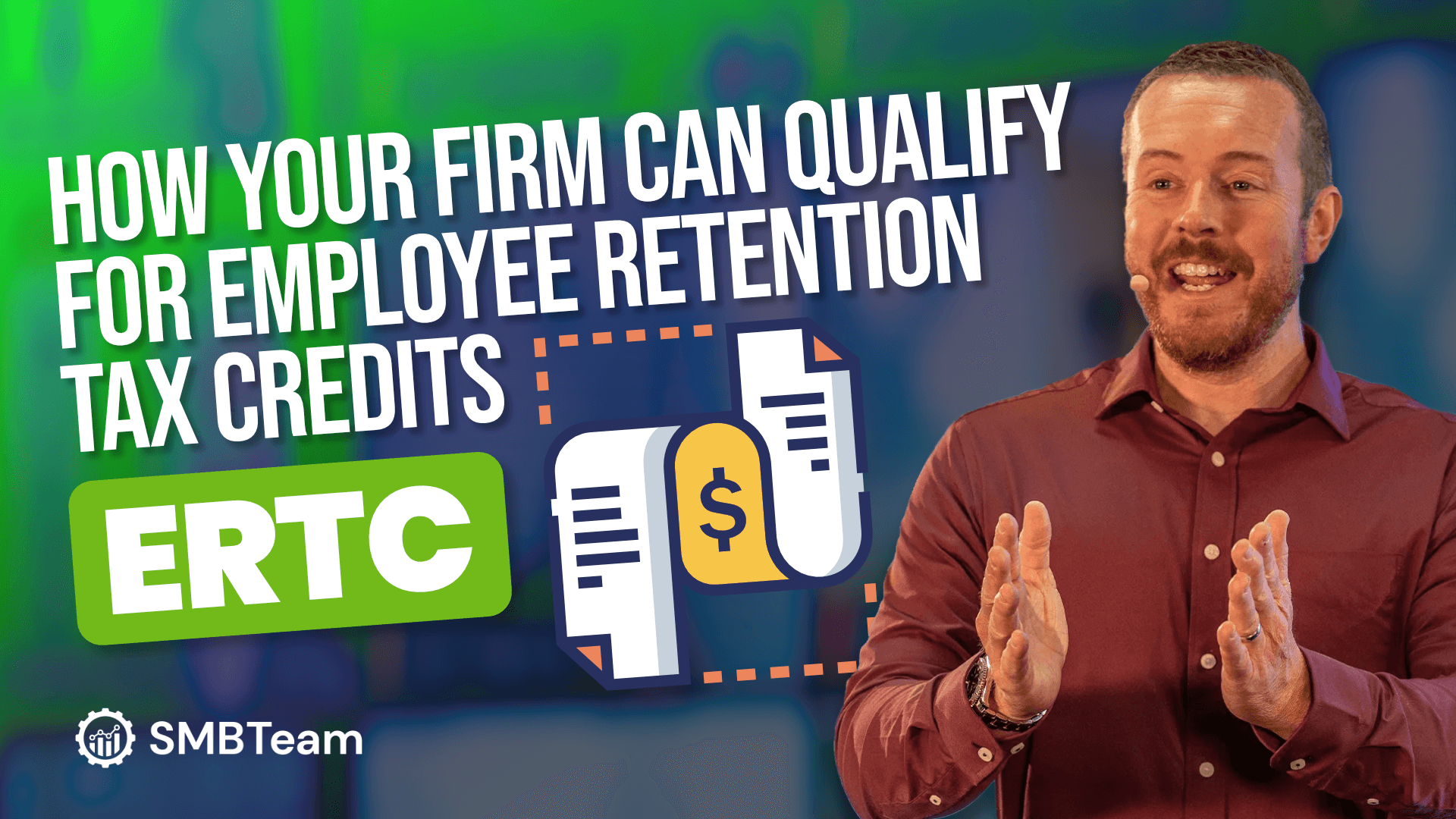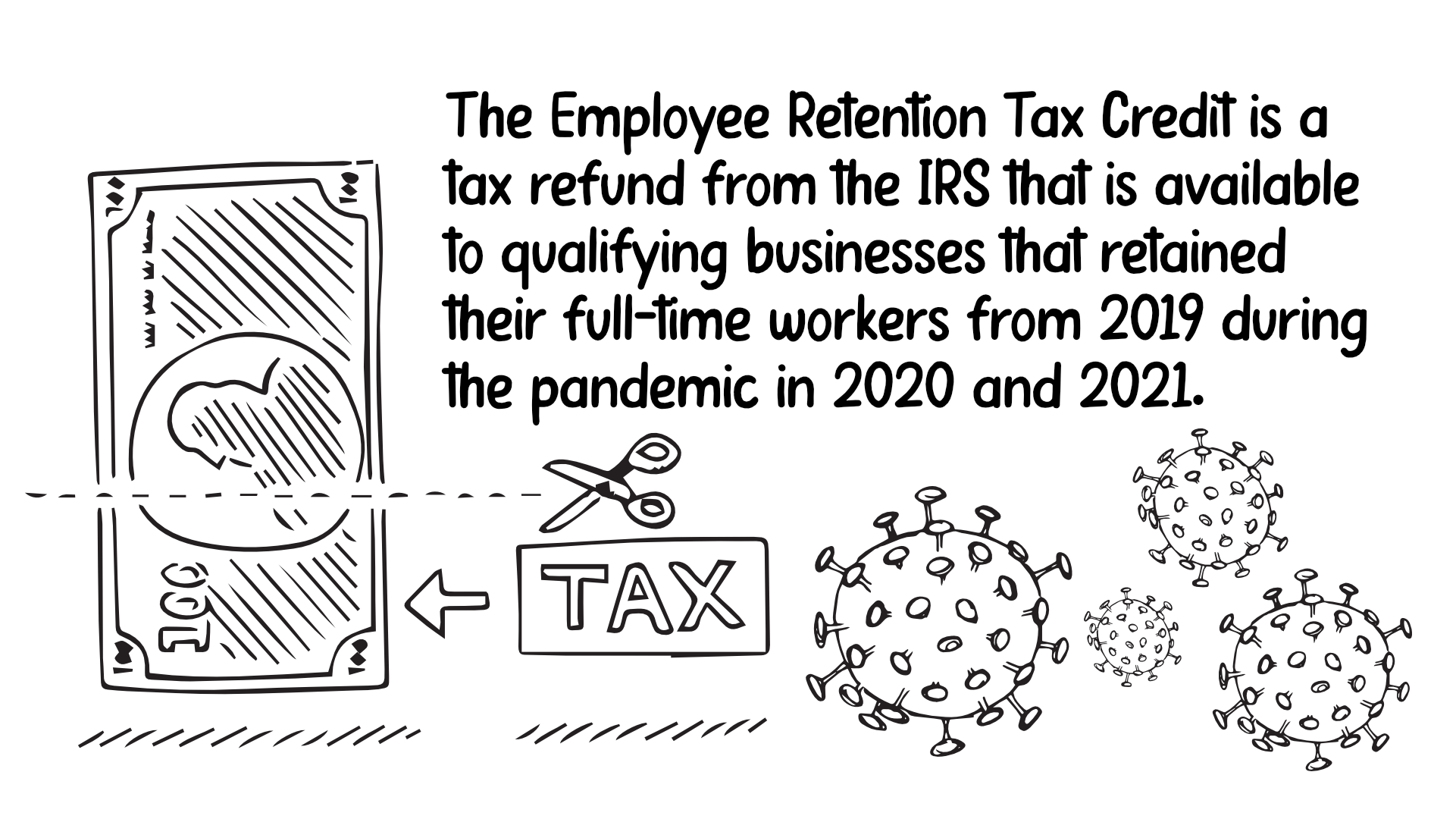
See If Your Law Firm Qualifies for This Huge Tax Credit in 2022
The pandemic affected the operations and revenue of businesses in every industry, whether it caused their business to drop or increase. Most small businesses had to make changes and adjustments during 2020 and 2021, including law firms, to account for local and federal mandates, changes in demand, and availability of local services.
If you had employees on the payroll at your law firm during the worst of the pandemic, then you could be eligible for the Employee Retention Tax Credit (ERTC). This federal tax credit was designed to help ease business losses from the pandemic and can pay off big for law firms. Here’s what you need to know about the ERTC and your eligibility.

What is the Employee Retention Tax Credit (ERTC)?
The Employee Retention Tax Credit is a tax refund from the IRS that is available to qualifying businesses that retained their full-time workers from 2019 during the pandemic in 2020 and 2021. This credit is essentially a reward or incentive for businesses that continued to pay employees when their normal business operations were disrupted by shutdowns caused by the COVID-19 pandemic. The ERTC was passed as part of the Coronavirus Aid, Relief, and Economic Security (CARES) Act.

ERTC benefits offer a portion of qualifying employee wages and employment taxes back as a tax credit. In 2022, this can be a cash payout, although businesses that owe back taxes might have some or all of the credit applied to their tax bill.
Originally, businesses could get up to $5000 per employee as part of the ERTC, but the credit was expanded in 2021 to $21,000 for that year. Businesses that kept their employees onboard during both 2020 and 2021 can combine these credits and get up to $26,000 back from the IRS per qualifying employee. Payment from the ERTC is taxed, but any fees paid to a lawyer to collect the credit are tax deductible.
How Businesses Can Qualify for an ERTC Tax Credit?
Any business that was impacted by the pandemic and paid qualifying wages to employees during most of 2020 and 2021 can claim the Employee Retention Tax Credit. Most people think that your business had to suffer a revenue drop during 2020 and 2021 to be eligible, but that isn’t necessarily true. There are two main ways to qualify for an ERTC:
- A revenue drop of 50% in 2020 or 25% in 2021 (comparing the same or preceding quarters in 2019)
- Proving that your business was disrupted in some way during the pandemic
Proving that your revenue dropped is the easiest way to claim the tax credit. However, business owners who saw their revenue stay the same or increase can still claim the credit if they can prove their business was disrupted. As most business owners know, normal operations can be disrupted in a lot of different ways!

How Can Law Firms Claim the ERTC?
Many law firm owners aren’t aware that any business, including law firms, can potentially qualify for the Employee Retention Tax Credit. Because many law firms saw their revenues increase during the pandemic, they assume that they don’t qualify for the credit. Law firm owners who ask their accountants and payroll companies about the ERTC are typically told they don’t qualify because their revenue didn’t drop–but this isn’t strictly true.
Instead of using the revenue drop test, lawyers can use a legal causation analysis to prove that their business had operations suspended or limited during the pandemic. Some examples of limited or suspended operations include:
- Legal limits on the number of people allowed in your office building
- Inability to work with vendors
- Reduction in hours
- Delayed or canceled projects
- No networking events or conferences taking place
- Supply chain disruptions
- Local restrictions on in-person services

Law firm owners can point to the fact that many courts were closed during the early days of COVID-19, affecting their ability to run their firms as normal. This is just one of the many disruptions that affected lawyers and the legal industry as a whole in 2020 and 2021. Using these disruptions on an ERTC application is perfectly legitimate and could qualify your firm for the credit, even without a revenue drop.
Qualifying Employees and Wages
To qualify for the ERTC, your law firm must have employed at least one full-time employee (defined as working an average of at least 30 hours per week) other than yourself or any close family members, like a parent, child, grandparent, or sibling. These employees must have been working at your firm in 2019 since the ERTC is intended for employers who didn’t let their employees go during the pandemic.
Businesses with fewer than 500 employees can use ALL compensation paid to qualified employees, including health insurance when determining ERTC benefits. Contractors don’t qualify for the ETRC, so any wage credits claimed must be for W-2 employee salaries.
ERTC Dates and Deadlines
Businesses can submit a claim for the tax credit only until March of 2023, so it’s important to apply as soon as possible if you think your firm qualifies.
The dates that apply to the ERTC you could receive are March 12, 2020, to September 30, 2021. Each quarter is calculated separately, so you can qualify for some quarters and not for others if there were changes in factors like the business disruptions affecting your operations, your firm’s revenue, and the number of full-time employees working for you.
Applying for the ERTC Tax Credit
To apply for the ERTC, you must submit your qualifying employee wages and health insurance to the IRS. If your firm doesn’t qualify based on the revenue drop test, it can be worth working with a lawyer to help you show the IRS how your business was impacted by the COVID-19 pandemic. Lawyers charge a contingency fee for this service, while payroll companies usually charge an upfront fee.
Once you’ve applied for the Employee Retention Tax Credit, the process could take a while to complete. On average, it will take at least 3-8 months, and up to 12 months or longer to get approved and get payment from the IRS.
Is it Worth Applying for the ERTC As a Law Firm Owner?
For law firm owners who qualify, there’s no reason not to apply for an ERTC Tax Credit. It’s a benefit that could give you additional funds to invest in your law firm’s growth. According to Michael Blom, a lawyer specializing in the ERTC, law firms that qualify get an average of $16,000 back per eligible employee from this tax credit.
At SMB Team, we’re excited about this opportunity for lawyers and want to help you get the tax credit if you’re eligible. Want to see if you qualify for the ERTC? Apply here: www.smbteam.com/ertcform